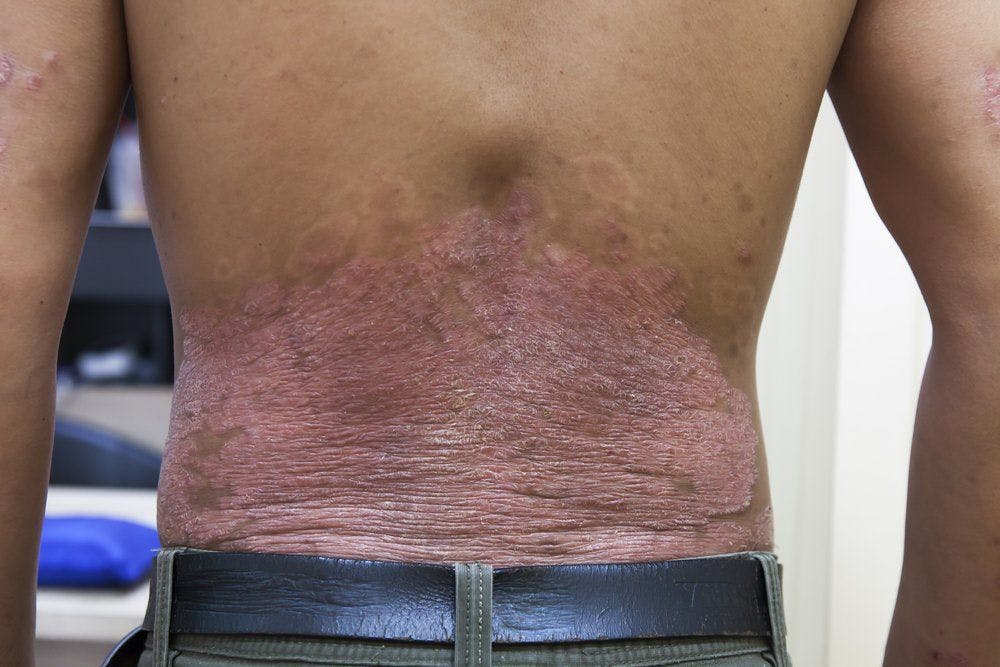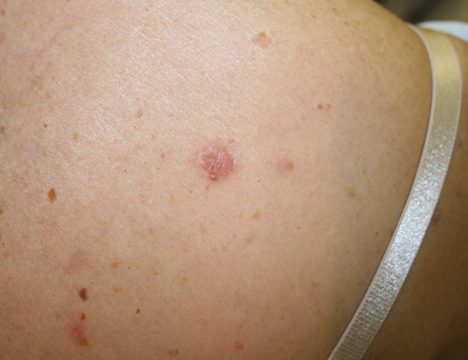- Acne
- Actinic Keratosis
- Aesthetics
- Alopecia
- Atopic Dermatitis
- Buy-and-Bill
- COVID-19
- Case-Based Roundtable
- Chronic Hand Eczema
- Chronic Spontaneous Urticaria
- Drug Watch
- Eczema
- General Dermatology
- Hidradenitis Suppurativa
- Melasma
- NP and PA
- Pediatric Dermatology
- Pigmentary Disorders
- Practice Management
- Precision Medicine and Biologics
- Prurigo Nodularis
- Psoriasis
- Psoriatic Arthritis
- Rare Disease
- Rosacea
- Skin Cancer
- Vitiligo
- Wound Care
Publication
Article
Dermatology Times
An Overview of Documented Flares in Patients With GPP
Author(s):
Aaron Farberg, MD, and Jeffrey Crowley, MD, take a closer look at the management and treatment of generalized pustular psoriasis.
Generalized pustular psoriasis (GPP) is a rare systemic disease that includes systemic symptoms of fever, chills, and fatigue, and is an overall challenging disease to identify and manage. To take a closer look at the management and treatment of flares in patients with GPP, Aaron Farberg, MD, board-certified dermatologist and Mohs surgeon in private practice in Dallas, Texas, and affiliated with Baylor Scott & White Health, and Jeffrey Crowley, MD, dermatologist at Bakersfield Dermatology & Skin Cancer Medical Group in Bakersfield, California, reviewed the article, “Understanding Flares in Patients with Generalized Pustular Psoriasis Documented in US Electronic Health Records,” in Between the Lines, a Dermatology Times® series.
Crowley began by explaining GPP flares are difficult because the first time a patient has a flare, they probably haven’t received a GPP diagnosis. Many patients experience a delay in diagnosis of up to many years.
“Once a patient has GPP and you’ve controlled the flare, they can have subsequent flares. There could be a lot of trigger factors for these subsequent flares. The disease is treated in 2 ways. One is treating the flare and the other is treating the underlying inflammatory symptoms to prevent the next flare. They’re 2 different approaches,” said Crowley.
Farberg echoed the difficulty of effectively managing and treating GPP and the burden patients carry.
“The burden is large, and it’s incredibly significant for our patients. We’re talking about mortality. With dermatologic diseases, we’re often not as concerned about living or dying. But with this disease, it’s at the top of our concerns. There are so many issues these patients go through,” said Farberg.
The study that Farberg and Crowley reviewed aimed to characterize GPP flares and their treatment to describe the differences between patients with and without documented GPP flares, utilizing our United States electronic health record (EHR) system, which clinicians use regularly. The retrospective observational cohort study using Optum, deidentified EHR, commercial, Medicare, Medicaid payers, and self-pay data in adults 18 years or older who had GPP was conducted until December 31, 2019. It was a database search from 2016 to 2019, identifying over 48.6 million patients, with EHR notes available. Of those, 1535 received a GPP diagnosis.
Flare episodes were defined as consecutive days with documented EHR flares. This was documented in the health record. They were characterized by the frequency of occurrence per patient, the care setting where the flare was identified, the specialist who was identifying it, and the treatment type.
“This study is a little like finding a needle in a haystack. We have 48 million records and 1500 patients who have GPP. We’re narrowing it down to the few who also have a flare. It shows how difficult it is to study these things, which aren’t seen very often. It’s important to get data because they’re mostly one-off. Most of our experience is with a few patients,” said Crowley.
Regarding the number of documented GPP flares in the study, 1 to 13 patients had documented GPP flares. Crowley mentioned that the first point to predict is when the flare stops. The reviewed study doesn’t delineate that. There is less documentation about when flares are considered no longer active. Crowley also pointed out that it’s interesting that most patients have 1 flare but others go on to have many subsequent flares.
“When I’m prescribing a drug, I’ll usually look at the prescriber’s information and the top 3 adverse events because that’s what I’m going to be discussing with my patient. When you have GPP and you’re talking to clinicians, what are you expecting? Pain is such an important symptom that I use to gauge when the flare is over. But it’s up to the patient—the patient stops having to come in so often or stops telling me that their life has been significantly impacted by their pain,” said Farberg.
The reviewed data shows that GPP is a disease that needs a unified treatment approach. Based on the data, many patients are receiving very little help in terms of intervention. Crowley said he typically avoids oral corticosteroids, as steroids can be an inducer of pustular psoriasis. Crowley also looks to tumor necrosis factor inhibitors, interleukins (ILs), phosphodiesterase-4 inhibitors, and some oral retinoids as effective treatment options. He often uses IL-17 to help with some GPP turnaround, but it’s not directly targeting GPP.
“We have lots of treatments, but if there’s 1 that worked very well, we would all use it. I know we’re excited to have at least 1 that is approved for GPP and will have a strong impact on our patients. We’re excited to see how our colleagues will utilize it,” said Farberg.
Farberg noted that in the study, the most utilized treatment for patients with GPP flares was, “unfortunately,” corticosteroids. The use of biologics and other advanced treatments was low. For patients who go to the emergency department during a GPP flare, biologics are difficult to get from a hospital. At a dermatologist’s office, a biologic is easier to get access to. Crowley says this may be the reason there wasn’t high utilization of biologics in the study.
“We as dermatologists have to be the experts and educate the public as well as our colleagues on these diseases. They may not know all the details that we are familiar with, but that is not their job. Their job is to recognize it and then get the patient referred to a dermatologist,” said Farberg.
Both Farberg and Crowley ended their review of documented GPP flares by noting that it’s important for dermatologists to educate their patients about the disease as well as educate their colleagues on new treatments available for a flaring patient. With more health care professionals aware of the challenges and severity, GPP can be identified faster to give patients relief.
Reference
1. Farberg A, Crowley J. Dermatology Times® Between The Lines. Understanding flares in patients with generalized pustular psoriasis documented in US electronic health records. November 21, 2022. Accessed January 5, 2023. https://www.dermatologytimes.com/between-the-lines/understanding-flares-in-patients-with-generalized-pustular-psoriasis-documented-in-us-electronic

Newsletter
Like what you’re reading? Subscribe to Dermatology Times for weekly updates on therapies, innovations, and real-world practice tips.






















